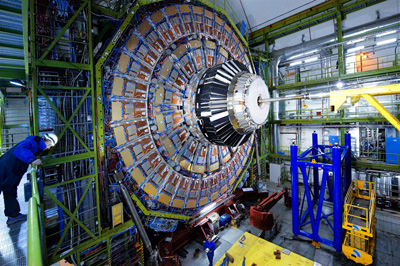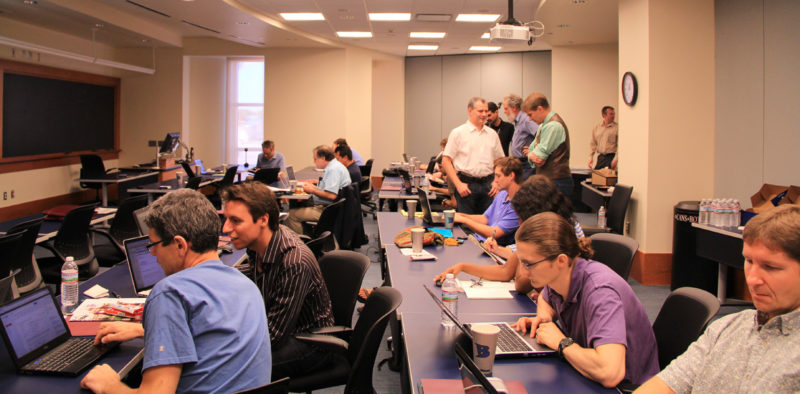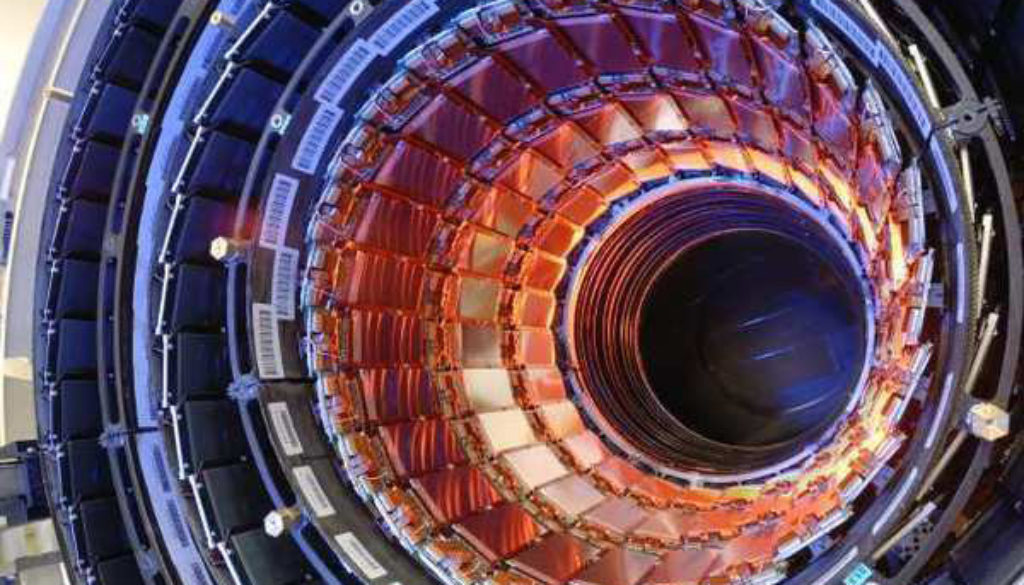Texas A&M Scientists Celebrate Nobel Prize for Higgs Discovery
A group of physicists from Texas A&M University are basking in the worldwide glow of big science, based on their critical supporting role along with thousands of scientists across the globe in the 2013 Nobel Prize in Physics, awarded today (Oct. 8) by the Royal Swedish Academy of Sciences to theorists Peter Higgs and Francois Englert to recognize their work developing the theory of what is now known as the Higgs field, credited for giving elementary particles mass.
Higgs and Englert specifically were cited “for the theoretical discovery of a mechanism that contributes to our understanding of the origin of mass of subatomic particles, and which recently was confirmed through the discovery of the predicted fundamental particle, by the ATLAS and CMS experiments at CERN’s Large Hadron Collider.”


U.S. scientists — including more than 30 from Texas A&M’s George P. and Cynthia Woods Mitchell Institute for Fundamental Physics and Astronomy involved in the CMS experiment — played a significant role in advancing the theory and in discovering the particle that proves the existence of the Higgs field, the Higgs boson.
In the 1960s, Higgs and Englert, along with other theorists (including Robert Brout, Tom Kibble and Americans Carl Hagen and Gerald Guralnik) published papers introducing key concepts in the theory of the Higgs field. In 2012, scientists on the international ATLAS and CMS experiments, performed at the Large Hadron Collider at CERN laboratory in Europe, confirmed this theory when they announced the discovery of the Higgs boson.
“Texas A&M joins the rest of the world in congratulating our theory colleagues Peter Higgs and Francois Englert,” said Alexei Safonov, an associate professor in the Department of Physics and Astronomy and a CMS collaboration member. “We are very happy that their achievement has been recognized with the highest prize in physics, and we likewise congratulate all our colleagues in theory and in the two experiments who have been part of the discovery, including our own researchers and students.”
Nearly 2,000 physicists from U.S. institutions — including 88 universities besides Texas A&M and seven U.S. Department of Energy laboratories — participate in the ATLAS and CMS experiments, making up about 23 percent of the ATLAS collaboration and 33 percent of CMS at the time of the Higgs discovery. Brookhaven National Laboratory serves as the U.S. hub for the ATLAS experiment, and Fermi National Accelerator Laboratory serves as the U.S. hub for the CMS experiment. U.S. scientists provided a significant portion of the intellectual leadership on Higgs analysis teams for both experiments.
Safonov is joined by experimental physicists Teruki Kamon, Ricardo Eusebi and David Toback in representing Texas A&M in the CMS collaboration, along with fellow Texas A&M experimental physicist Peter McIntyre, who helped conceive the original idea for Fermilab’s Tevatron, along with theoretical physicists Dimitri Nanopoulos, Bhaskar Dutta and Richard Arnowitt.
For more information on the Nobel Prize, please see Fermilab’s official press release or visit their background page.
Find additional background on the Higgs discovery and Texas A&M’s involvement.
Click here to see images of the Higgs event detected at the CMS detector, created using a new software developed by Texas A&M postdoctoral student Tai Sakuma.
To learn more about the CMS collaboration, visit the Texas A&M Collider Physics website at http://collider.physics.tamu.edu.
Watch a video that explains America’s vital contributions to the Higgs discovery on YouTube:
-aTm-
Contact: Shana K. Hutchins, (979) 862-1237 or shutchins@science.tamu.edu or Dr. Alexei N. Safonov at (630) 650-2078 or safonov@tamu.edu
The post Texas A&M Scientists Celebrate Nobel Prize for Higgs Discovery appeared first on Texas A&M College of Science.
